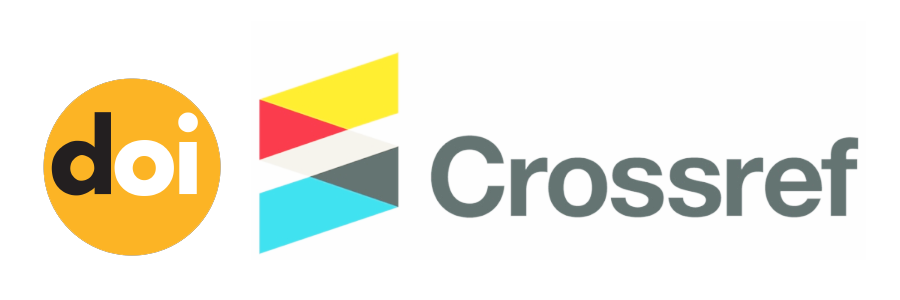Practicality and Effectiveness of Activity-based Worksheets with the ExPRession Learning Model to Train Hands-on Activities on Newton's Law
Abstract
This research aims to determine the practicality and effectiveness of worksheets based on the ExPRession learning model to train direct practical activities on Newton's laws. The samples are classes of X Science 4 and X Science 5 at SMAN 1 Gadingrejo in the 2022/2023 academic year. The research design uses the Pretest-Posttest Control Group Design. Applying worksheets with the ExPRession learning model in physics learning effectively trains students' activity skills. This is proven by the results of learning implementation using the ExPRession learning model, reaching 87.30%, and the assessment of students' Hands-on Activity, reaching 78.35%. The results of hypothesis testing also show a higher difference in students' practical activity skills between classes that apply worksheets based on the ExPRession learning model in physics learning. Based on the research results, it was found that implementing activity-based worksheets with the ExPRession learning model impacted training students' hands-on activity skills. This is because learning using various forms of representation can help students' understanding of concepts when solving physics problems. Students are more enthusiastic if the physics learning process is accompanied by simple, practical work. It was concluded that using worksheets based on the ExPRession learning model was effective for training students' hands-on activity skills.
Keywords
Full Text:
PDFReferences
Abbas, A., & Yusuf Hidayat, M. (2018). Faktor-faktor kesulitan belajar fisika pada peserta didik kelas ipa sekolah menengah atas. JPF (Jurnal Pendidikan Fisika) Universitas Islam Negeri Alauddin Makassar, 6(1), 45–49.
Ambarita, R. A., Yunastiti, Y., & Indriayu, M. (2019). The application of group investigation based on hands-on activities to improve learning outcomes based on higher order thinking skills of students at sma negeri 2 pematangsiantar. Budapest International Research and Critics in Linguistics and Education (BirLE) Journal, 2(2), 351–359.
Arikunto, S. (2011). Penilaian dan Penelitian bidang bimbingan dan konseling. Aditya Media.
Ateş, Ö., & Eryilmaz, A. (2011). Effectiveness of hands-on and minds-on activities on students’ achievement and attitudes towards physics. Asia-Pacific Forum on Science Learning and Teaching, 12(1), 1–22.
Campbell, D. T. and J. C. S. (1963). Handbook of research on teaching. In N. L. Gage (Ed.), Contemporary Psychology: A Journal of Reviews, 29(4). Rand McNally Company.
Celikoz, N., Erisen, Y., & Sahin, M. (2019). Cognitive learning theories with emphasis on latent learning, gestalt, and information processing theories. Journal of Educational and Instructional Studies in The World, 9(3), 18–33.
Cohen, L., Lawrence M., & Morrison, K. (2007). Research methods in education. Ecology, Environment and Conservation (Sixth Edit). 270 Madison Avenue, New York: Routledge.
Costu, B., Ünal, S., & Ayas, A. (2007). A Hands-on activity to promote conceptual change about mixtures and chemical compounds. Journal of Baltic Science Education, 6(1), 35–46.
Divia, B. C., Herlina, K., Viyanti, V., Abdurrahman, A., & Ertikanto, C. (2022). Learning of inquiry sequences-based e-student worksheet assisted by canva to stimulate hands-on skills, mind-on activity, and science process skills. Indonesian Journal of Science and Mathematics Education, 5(3), 318–329.
Docktor, J. L., & Mestre, J. P. (2014). Synthesis of discipline-based education research in physics. Physics Education Research, 10(2), 1–58.
Erti, M. P. (2017). Penerapan model hands-on activity untuk meningkatkan kemampuan berpikir kritis peserta didik pada pembelajaran fisika mtsn iv koto aur. Natural Science Journal, 3(1), 383–390.
Evans, L., & Ellis, A. K. (2017). Teaching, learning, and assessment together: Reflective assessments for middle and high school english and social studies. United Kingdom: Taylor & Francis Group.
Firdaus, F., Pisnaji, M. A., Azzahra, S., & Sidqi, M. F. K. (2021). Pengaruh motivasi belajar fisika terhadap hasil belajar di sma n 5 kota jambi. Jurnal Pendidikan Mipa, 11(2), 5-11.
Flores, R., Koontz, E., Inan, F. A., & Alagic, M. (2015). Multiple representation instruction first versus traditional algorithmic instruction first: Impact in middle school mathematics classrooms. Educational Studies in Mathematics, 89(2), 267–281.
Gazibara, S. (2013). “Head, heart, and hands learning” - a challenge for contemporary education. Journal of Education Culture and Society, 4(1), 71–82.
Herlina, K. (2020). Model Pembelajaran expression untuk membangun model mental dan kemampuan problem solving. Yogyakarta: Graha Ilmu.
Hoque. (2016). Three domains of learning : Cognitive, affective and psychomotor. The Journal of EFL Education and Research (JEFLER), 2(2), 45–52.
Ikbal, M. S., & Abdi, I. (2021). Efektivitas penggunaan metode hands-on activity terhadap hasil belajar fisika peserta didik. Al-Khazini: Jurnal Pendidikan, 1(1), 81–90.
Johansen, J. (1997). Instructional design models for well-structured and ill-structured problem-solving learning outcomes. Educational Technology Research and Development, 45(1), 65–94.
Kartono. (2010). Hands-on activity pada pembelajaran geometri sekolah sebagai asesmen kinerja siswa. Jurnal Matematika Kreatif-Inovatif, 1(1), 21–32.
Ke, F., & Grabowski, B. (2007). Gameplaying for maths learning: cooperative or not? British Journal of Educational Technology, 38(2), 249–259.
Kohl, P. B., Rosengrant, D., & Finkelstein, N. D. (2007). Strongly and weakly directed approaches to teaching multiple representation use in physics. Physical Review Special Topics - Physics Education Research, 3(1), 1–10.
Krombaß, A., & Harms, U. (2008). Acquiring knowledge about biodiversity in a museum: Are worksheets effective? Journal of Biological Education, 42(4), 157–163.
Lebuffe, J. R. (1994). Hands on science in the elementary school. In Phi Delta Kappa, Educational Foundation. Bloomington: Phi Delta Kappa Educational Foundation.
Lee, C.-D. (2014). Worksheet usage, reading achievement, classes’ lack of readiness, and science achievement: A cross-country comparison. International Journal of Education in Mathematics, Science and Technology, 2(2), 96–106.
Lestari, L. D. (2020). Pentingnya mendidik problem solving pada anak melalui bermain. Jurnal Pendidikan Anak, 9(2), 100–108.
McDermott, L. (1996). Physics by inquiry (D. Herbert (ed.); volume 1). John Wiley.
Pratama, N. S., & Istiyono, E. (2015). The study on the implementation of higher order thinking (hots)-based physics learning in class x at yogyakarta city public high school. Prosiding : Seminar Nasional Fisika Dan Pendidikan Fisika (SNFPF), 104–112.
Renner, J. W, Michael R. Abraham, H. H. B. (1985). Secondary school students’ beliefs about the physics laboratory. Science Education, 69(5), 649–663.
Rosengrant, D. (2007). Multiple representations and free-body diagrams: Do students benefit from using them? New Brunswick, New Jersey: Kennesaw State University.
Sari, A. L. R., Parno, P., & Taufiq, A. (2018). Pemahaman konsep dan kesulitan siswa sma pada materi hukum newton. Jurnal Pendidikan: Teori, Penelitian, Dan Pengembangan, 3(10), 1323–1330.
Simpson, E. J. (1971). Educational objectives in the psychomotor domain. Behavioral Objectives in Curriculum Development: Selected Readings and Bibliography, 60(2), 1–35.
Slavin, R. E. (2010). Cooperative learning : Theory, research and practice. United Kingdom: Allyn and Bacon.
Supeno, S., Subiki, S., & Rohma, L. W. (2018). Students’ ability in solving physics problems on newtons’ law of motion. Jurnal Ilmiah Pendidikan Fisika Al-Biruni, 7(1), 59–70.
Uki, R. S., Saehana, S., & Pasaribu, M. (2017). Pengaruh model pembelajaran generatif berbasis hands-on activities pada materi fluida dinamis terhadap kemampuan berpikir kritis siswa. Physics Communication, 1(2), 6–11.
Woolfolk, A., & Hoy, A. W. (2019). Educational psychology: Active learning edition. Britania Raya: Pearson.
DOI: https://doi.org/10.20527/jipf.v8i2.11704
Refbacks
- There are currently no refbacks.
Indexed by: Jurnal Ilmiah Pendidikan Fisika is licensed under a creative commons attribution-share alike 4.0 international license
Statistics Counter |
















